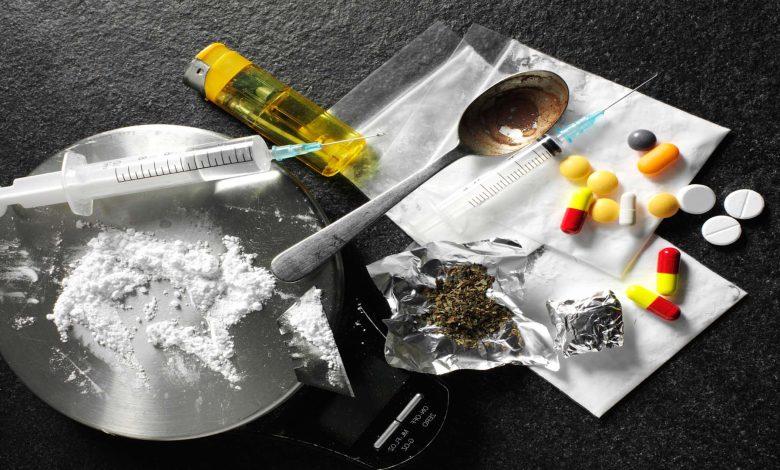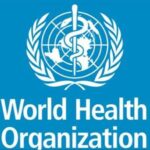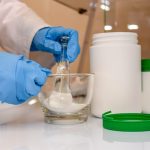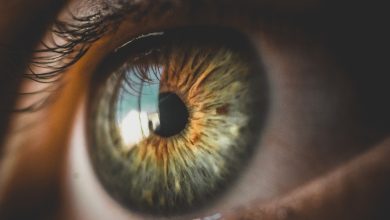Drug Definition in Pharmacy, Biology, According to WHO

The term “drug” can have different meanings and interpretations depending on the context in which it is used. Here are several contexts in which the term “drug” is commonly employed:
1. Pharmaceutical Context: In the field of pharmacy and medicine, a drug refers to a substance or product used for diagnosing, preventing, treating, or curing diseases or medical conditions. This includes prescription drugs, over-the-counter medications, vaccines, and other therapeutic agents.
2. Recreational Context: In the context of recreational drug use, a drug typically refers to substances that are consumed for their psychoactive effects and mood-altering properties. These substances, such as cannabis, cocaine, heroin, or hallucinogens, are often used for recreational purposes outside of medical or therapeutic applications.
3. Legal Context: In legal terms, the definition of drugs may vary depending on local legislation and jurisdiction. It typically includes substances that are controlled or regulated due to their potential for abuse, addiction, and harm. This encompasses both illegal drugs (e.g., cocaine, methamphetamine) and certain prescription medications that are classified as controlled substances.
4. Performance-Enhancing Context: In the realm of sports and athletics, the term “drug” is often used in reference to substances or methods that are prohibited due to their potential to enhance performance beyond natural capabilities. These may include anabolic steroids, blood doping, or other illicit substances or techniques.
5. Research and Development Context: Within scientific research and drug development, the term “drug” encompasses a wide range of chemical compounds, including those that are investigated for their potential therapeutic uses. Researchers study the efficacy, safety, and mechanisms of action of various drugs to develop new treatments and improve existing medications.
It is important to consider the specific context in which the term “drug” is used to fully understand its intended meaning, as it can have different connotations and implications based on the given context.
Drug Definition in Pharmacy
In the context of pharmacy, a drug is a substance that is used to prevent, diagnose, treat, or cure diseases or medical conditions. It can also refer to a substance that is used to alter physiological functions for therapeutic purposes. Drugs can be derived from various sources, including plants, animals, and minerals, or synthesized in laboratories.
Pharmaceutical drugs are typically developed through a rigorous process of research, testing, and regulatory approval to ensure their safety and efficacy. They are commonly prescribed by healthcare professionals, such as doctors, nurse practitioners, or pharmacists, and are dispensed by licensed pharmacists or other authorized healthcare providers.
Drugs can be classified into different categories based on their properties and therapeutic uses. For example:
1. Prescription drugs: These are medications that require a written or electronic prescription from a healthcare professional to be dispensed. They are typically used to treat specific medical conditions and may have potential risks or side effects.
2. Over-the-counter (OTC) drugs: These medications are available for purchase without a prescription. They are generally considered safe and effective when used as directed for self-treatment of common health conditions such as headaches, allergies, or heartburn.
3. Generic drugs: These are medications that are produced after the patent protection of a brand-name drug expires. They contain the same active ingredients and are equivalent in dosage, strength, route of administration, quality, and performance as the original brand-name drug. Generic drugs are typically more affordable than their brand-name counterparts.
4. Brand-name drugs: These medications are developed and marketed by pharmaceutical companies under a specific brand or trade name. They are typically protected by patents, which grant exclusive rights to the manufacturer for a certain period of time to recoup their research and development costs.
It’s important to note that drugs should be used appropriately and under the guidance of a healthcare professional. Improper use or abuse of drugs can lead to adverse effects and potential harm to the individual.
Drug Definition in Biology
In biology, a drug refers to any chemical substance or compound that affects the structure or function of a living organism. Drugs are commonly used to interact with specific targets in biological systems, such as cells, tissues, or organs, in order to produce a desired physiological or therapeutic effect.
In the field of biology, drugs can have various applications and mechanisms of action. Some drugs are designed to directly interact with specific molecules, such as receptors or enzymes, in order to modulate their activity. By binding to these targets, drugs can alter cellular signaling pathways, enzymatic processes, or molecular interactions, leading to specific biological responses.
Drugs can be used for a variety of purposes in biological research and medicine, including:
1. Therapeutics: Drugs are used in the treatment and management of diseases, disorders, or medical conditions. They can alleviate symptoms, cure infections, inhibit the progression of diseases, or modify physiological processes.
2. Pharmacology: Drugs are studied to understand their mechanisms of action, pharmacokinetics (absorption, distribution, metabolism, and excretion), and pharmacodynamics (how drugs interact with the body). This knowledge helps in optimizing drug effectiveness, minimizing side effects, and developing new therapeutic interventions.
3. Drug discovery and development: Researchers investigate natural compounds, synthetic molecules, or existing drugs to identify potential candidates for new therapeutics. Drug development involves rigorous testing for safety and efficacy, as well as obtaining regulatory approvals before they can be used in clinical practice.
4. Molecular and cellular biology research: Drugs are frequently used as tools in laboratories to manipulate cellular processes or investigate specific molecular pathways. They can be employed to activate or inhibit certain cellular functions, explore protein-protein interactions, or study cellular responses to external stimuli.
It is worth noting that in biological contexts, drugs are not limited to medications used in human or veterinary medicine. They encompass a broader range of chemical compounds, including those used in basic research, experimental studies, and even environmental monitoring.
Drug Definition According to WHO
The World Health Organization (WHO) defines a drug as any substance or product that is intended for use in the diagnosis, prevention, treatment, or relief of disease. It encompasses medications, vaccines, diagnostic agents, and other biological products, as well as traditional medicines and herbal remedies.
According to the WHO, drugs are classified into several categories:
1. Essential Medicines: These are medications that satisfy the priority healthcare needs of the population. They are selected based on their efficacy, safety, and cost-effectiveness and are intended to be available at all times in adequate quantities.
2. Generic Medicines: These are pharmaceutical products that contain the same active ingredients, dosage form, strength, and route of administration as their brand-name counterparts. They are marketed under their international non-proprietary name (INN) and are generally more affordable than brand-name drugs.
3. Over-the-Counter (OTC) Medicines: These are medications that can be purchased without a prescription. They are intended for self-treatment of common ailments and typically have a low risk of adverse effects when used as directed.
4. Vaccines: Vaccines are biological preparations that stimulate the immune system to protect against specific diseases. They are used for the prevention of infectious diseases and are critical in public health programs.
5. Traditional Medicines: Traditional medicines encompass various healing practices, approaches, knowledge, and beliefs that have been handed down through generations. These may include herbal remedies, acupuncture, traditional Chinese medicine, Ayurveda, and other traditional systems.
The WHO plays a vital role in promoting access to safe, effective, and quality medicines worldwide. Their efforts focus on ensuring the rational use of drugs, regulating pharmaceutical products, promoting research and development of new medicines, and strengthening healthcare systems to improve drug access and affordability.
Definition Of Drugs By Different Authors
Various authors have provided definitions of drugs from different perspectives. Here are a few examples:
1. David J. Nutt: David J. Nutt, a neuropsychopharmacologist, defines drugs as “chemical compounds that interact with specific targets in the brain, altering its normal functioning and producing a range of effects on mood, perception, cognition, or behavior.”
2. Rang and Dale’s Pharmacology: According to this widely used pharmacology textbook, a drug is defined as “any chemical that affects the processes of a living organism.”
3. Goodman and Gilman’s The Pharmacological Basis of Therapeutics: This influential pharmacology reference describes drugs as “chemical substances of known structure, other than nutrients, which, when administered to a living organism, produce a biological effect.”
4. William A. Silverman: William A. Silverman, a renowned pediatrician, defined drugs as “substances that are employed for their effects on living systems, especially on humans, for the prevention, diagnosis, and treatment of disease.”
5. Thomas L. Lemke and David A. Williams: In their book Foye’s Principles of Medicinal Chemistry, Lemke and Williams define drugs as “chemical agents used in the prevention, diagnosis, and treatment of diseases. They act by altering or regulating chemical reactions in the body.”
6. Arthur L. Goodhart: Arthur L. Goodhart, a legal scholar, defines drugs as “substances which, when taken into the body, produce certain chemical changes in the structure and function of the body.”
7. William O. Foye: William O. Foye, a pharmaceutical scientist, defines drugs as “chemical entities, which are used to prevent, diagnose, and treat diseases or for the relief of symptoms.”
8. Raymond Goldberg: Raymond Goldberg, a pharmacologist, defines drugs as “chemical substances used to diagnose, cure, or prevent diseases or other abnormal conditions, or for the relief of symptoms.”
9. Anthony J. Culyer: Anthony J. Culyer, a health economist, defines drugs as “substances that have an intended use in the diagnosis, prevention, treatment, or cure of disease in human beings or animals.”
It’s important to note that definitions of drugs may vary depending on the field of study or context in which they are used. These definitions highlight the role of drugs in modifying physiological processes, treating diseases, and producing biological effects in living organisms





